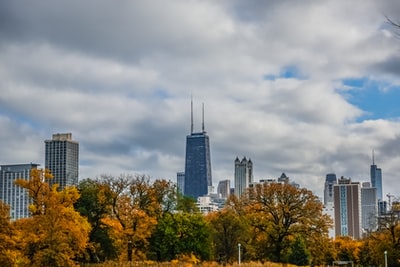 An ecosystem is not a fixed entity: it is in fact, constantly changing over time. This is known as succession.
An ecosystem is not a fixed entity: it is in fact, constantly changing over time. This is known as succession.
Succession
For example, say there’s an ecosystem consisting of bare rock. This is known the beginning of primary succession. Examples would be after a volcano erupts or mountain erosion. Not many species can colonise this area as rocks are not able to store much water and there are not many nutrients available either. Usually, the first colonisers are lichens. Lichen is not one organism but two which live together in a symbiotic relationship: the algae photosynthesises while the fungus is able to absorb water and minerals and attach to the rock. Lichens are one of the best colonisers and you’ll usually find it covering rocks.
Mosses are able to grow and develop on lichens. Together they begin to slowly break down the rock and a thin layer of soil forms. Essentially, they change the abiotic environment to one that’s less hostile.

Smaller, herbaceous plants appear next as their seeds are small and dispersed by the wind and because they have a fast growth rate. Such plants include dandelion and goose grass, what many would label as ‘weeds’.
Now larger plants appear. These are shrubs, like hawthorn, bramble, broom, rhododendron and gorse. The soil is now particularly good and these species are able to outgrow the pioneers.

A food web has now been created composed of numerous trophic levels and comprised of a complexity of interactions. This is known as the climax community.
As you can see, to reach the climax community takes a number of stages, known as seral stages or seral communities. The stages as a whole are known as a sere. The environment is modified each time by the organisms inhabiting in and as the stages progress so the community diversifies and the food webs become more complex. However, the climax community is a stable state and so succession stops.
Since the Neolithic era, humans have interfered with the succession process. Within the UK there are hardly any examples of a natural climax community in existence. The most well-known landscapes, from gardens to farmland, are all kept at a pre-climax stage. This is maintained through weeding, ploughing, planting crops, putting down herbicides, and allowing animals to graze. These landscapes are known as artificial climaxes or plagioclimaxes.